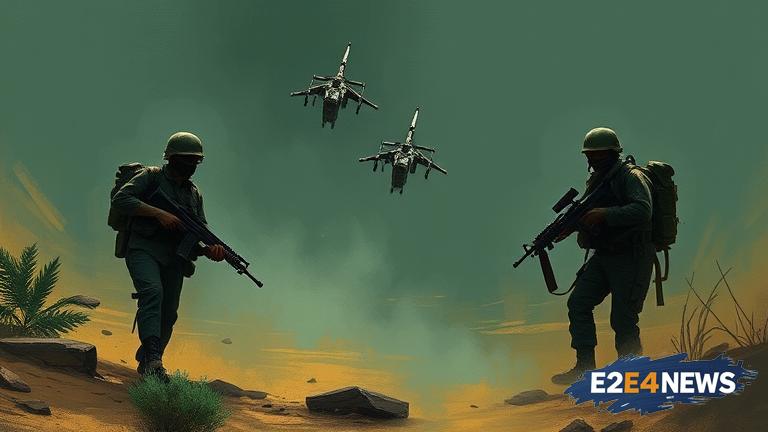The United Liberation Front of Asom-Independent (ULFA-I) is a militant organization that has been active in the northeastern region of India, particularly in the state of Assam, for several decades. The group’s primary objective is to establish an independent Assamese state, free from Indian rule. In response to the growing threat posed by ULFA-I, the Indian government has launched a series of clandestine operations aimed at dismantling the organization and disrupting its activities. These operations have been carried out by various Indian security agencies, including the Army, the Police, and the Intelligence Bureau. The Indian government has also been working closely with neighboring countries, such as Myanmar and Bangladesh, to share intelligence and coordinate efforts to counter the ULFA-I threat. Despite these efforts, the ULFA-I remains a potent force in the region, and its activities continue to pose a significant challenge to Indian security forces. The group’s ability to operate across international borders and its links with other militant organizations in the region have made it a difficult target to neutralize. The Indian government has also been criticized for its heavy-handed approach in dealing with the ULFA-I, with allegations of human rights abuses and extrajudicial killings. The ULFA-I has been responsible for numerous attacks on Indian security personnel and civilians, resulting in significant loss of life and property. The group’s activities have also had a debilitating impact on the economy of the region, with many businesses and industries being forced to shut down due to the prevailing insecurity. The Indian government has announced several initiatives aimed at addressing the grievances of the people of Assam and promoting economic development in the region, but these efforts have been slow to yield results. The ULFA-I’s ideology is rooted in the concept of Assamese nationalism, which emphasizes the need for an independent Assamese state. The group’s leaders have also been influenced by Marxist-Leninist ideology, which has shaped their approach to the struggle for independence. The ULFA-I has been able to maintain a significant level of support among the local population, particularly in rural areas, where the Indian government’s presence is limited. However, the group’s activities have also been widely condemned by the international community, with many countries viewing the ULFA-I as a terrorist organization. The Indian government has offered amnesty to ULFA-I cadres who are willing to surrender and renounce violence, but this offer has been rejected by the group’s leaders. The ULFA-I’s military wing is estimated to have several hundred cadres, who are trained in guerrilla warfare and are equipped with sophisticated weapons. The group’s leadership is headed by Paresh Baruah, a veteran militant who has been instrumental in shaping the ULFA-I’s strategy and tactics. The ULFA-I has also been able to establish links with other militant organizations in the region, including the National Socialist Council of Nagaland (NSCN) and the Manipur People’s Liberation Front (MPLF). These links have enabled the ULFA-I to access new sources of funding and weaponry, and to expand its operational reach beyond Assam. The Indian government has responded to the ULFA-I threat by deploying additional security forces to the region and by implementing a range of counter-insurgency measures, including intelligence gathering and surveillance. However, the ULFA-I remains a formidable challenge to Indian security forces, and its activities continue to pose a significant threat to regional stability.
